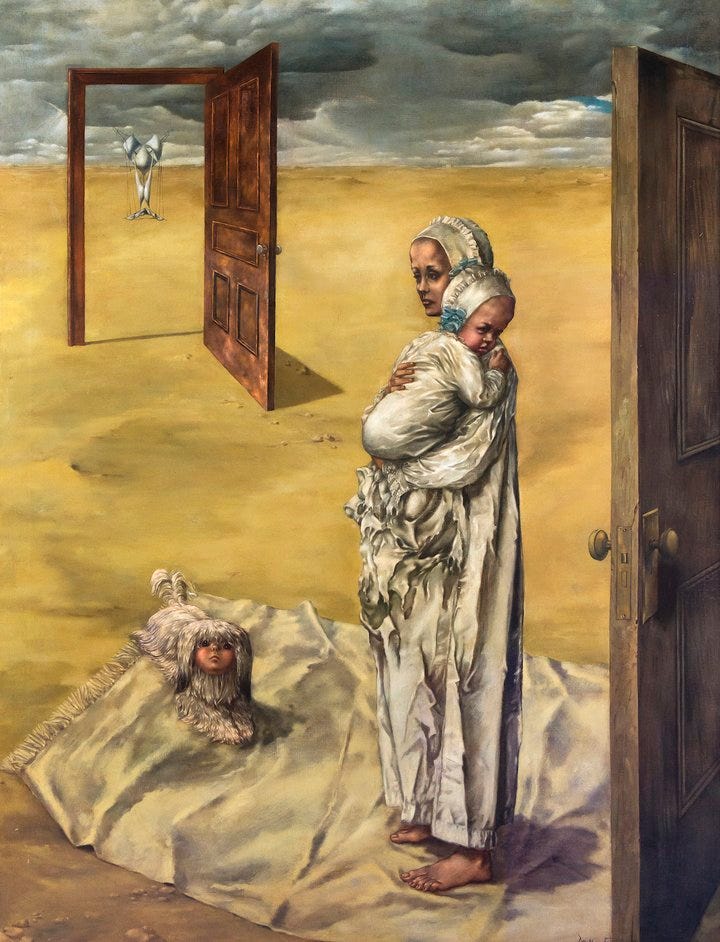The American surrealist, Dorothea Tanning, never had children but this picture is one of the most poignant representations I know of the isolation some mothers feel. It is perhaps an image of post-natal depression. But this very sombre subject is depicted in the most wonderfully imaginary and evocative way, which is why I find it fascinating as well as concerning.
She looks so sad. She is the one on whom all depend and her creased brow shows the burden of this, the stress. The baby has been crying, its face is red and raw and she has been awakened to tend to it. In the fevered state of sleeplessness, her future is suddenly barren and grotesque. She has lost the ease of rest, the chance of freedom, and all her proud independence. The desert is all around, urine-yellow but dry. Only a blanket on the ground stops it from burning through the soles of her feet. She is in her nightdress and the birth is so recent that her body is still a vegetal mess of rampant, overwhelming growth. The baby still merges with her body, drags upon it.
The dog looks to her for nourishment and care, like a second child. All things regard her as the provider of succour except the distant geometrical figure which is fleshless and composed of clean, scientific lines. Yet even this remote symbol of possibility beyond damp, human need is shaped to resemble the female: either as separated breasts and belly or as a diagrammatic fallopian tube and ovaries. To reach it, she would have to put down the screaming child and walk on hot sand. But the door, and with it the opportunity, might soon be closing.
Of all the figures, only the geometric shape has no shadow. Even the folds and bumps in the blanket have a shadow but that strange metallic form floats in space like an idea or a passing thought. The black clouds gather and the heat increases. The night hours drag on as she soothes the child, and the dog, and fights to forget this vision of her life as a desert.
On Substack this week I’ll be posting an image by Dorothea Tanning every day and you can see the previous four weeks of This Week’s Woman Surrealist (on Eileen Agar, Claude Cahun Leonora Carrington and Meret Oppenheim), on the homepage of The Fur Cup. You might also enjoy (re)reading the dialogue I imagined for two women looking at Dorothea Tanning’s Eine Kleine Nachtmusik.
If you click the heart to ‘like’ this post then more people will have the chance to read my imaginary encounters with surrealist art. Thanks!






What a powerful painting. I think it looks more ambivalent to me. I take relief in seeing that there are doors on both sides of her, and they are open. The geometric shape looks to me like it has full sails on stork legs. If the doors were closed, the sails were slack, or the mostly cloudy sky had less light burning through, I’d be more concerned for this mother. But I agree with you that she feels responsible for all of this, alone and dry.
Also, she is young. I think she’ll manage. But she won’t falsify that it’s lonely and hard.
Thanks for interpreting the painting, Kathy, I got more out of it with your explanation. I read Tanning's memoir, "Between Lives."